I recently overheard this friendly greeting in Walmart: “You’re getting better with age, just like a fine wine.” It’s a persistent idea that wine cellared for a while is somehow improved – gaining quality and developing nuance. Where does this idea come from?
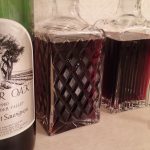 Last year, we had the privilege of sharing a magnum (equal to two bottles) of 1980 Silver Oak Alexander Valley Cabernet from Sonoma. A deep garnet red with a lively fresh-fruit aroma and plenty of backbone, it was delicious at age 36. My brother-in-law Mark, a guy with curiosity about all topics, asked why we did this: held a wine for years and then marveled at its condition and flavor. It was a good question.
Last year, we had the privilege of sharing a magnum (equal to two bottles) of 1980 Silver Oak Alexander Valley Cabernet from Sonoma. A deep garnet red with a lively fresh-fruit aroma and plenty of backbone, it was delicious at age 36. My brother-in-law Mark, a guy with curiosity about all topics, asked why we did this: held a wine for years and then marveled at its condition and flavor. It was a good question.
I had a chance to ask Kathleen Heitz Myers, president of Heitz Wine Cellar, about aging wines. She’s the daughter of Napa Valley legend Joe Heitz, who was known for his classically-styled, long-lived wines. Heitz wines have always had a little more acid and an old-world balance – made to last.
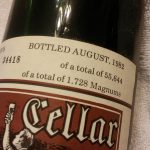 Myers likened ageing cabernet to a good marriage. “Over time, things blend, becoming more complex, nuanced, and interesting. In wine, tannins fade, the aromas morph from bright fruit to a softer, rounder palate, and a brisk acidity keeps the structure intact and the wine vigorous.” She went on to say, “With an age-worthy wine – just like in life – it’s difficult to pinpoint the best day or peak moment, but there are countless good ones along the journey.”
Myers likened ageing cabernet to a good marriage. “Over time, things blend, becoming more complex, nuanced, and interesting. In wine, tannins fade, the aromas morph from bright fruit to a softer, rounder palate, and a brisk acidity keeps the structure intact and the wine vigorous.” She went on to say, “With an age-worthy wine – just like in life – it’s difficult to pinpoint the best day or peak moment, but there are countless good ones along the journey.”
Not all wines improve with age. In fact most don’t. It’s only a select few that you can “lay down” for future drinking. White wines aren’t intended for aging and the vast majority of reds are at their best right off the shelf. But there are a few that will evolve, improve, and be worth the passage of time.
Red wine grapes are fermented with their skins, which contribute color as well as tannin, a natural preservative. Tannin also gives the wine a sometimes unpleasant mouth-puckering astringency. If the wine is made with a noble grape like Cabernet, Tempranillo, or Nebbiolo and is structured to be aged, then the tannin is an asset. Eventually it will fade and may even disappear, allowing the nuanced flavors of the wine to step forward.
These days, winemakers have almost total control over the winemaking process and can tailor wine to their vision. Not too long ago, winemakers were dependent on the variable weather, wild yeast, and the blessings or curses of nature. The grapes then were often not as ripe as the fruit from today’s farming techniques. Wines were often more tannic, had lower alcohol, and were not always enjoyable right away. Making wine was a chancy business from year to year, making the vintage date more meaningful.
With centuries of trial and error, it became clear that some wines from specific areas would taste better if they were aged. Regions like Bordeaux, Barolo and Ribera del Duero became famous for their powerful wines that rewarded aging.
Wines are still made to improve with age, but it’s the winemaker’s choice using only the best grapes. The Napa Valley, among others, has joined the old-world regions where age-worthy wines can be found.
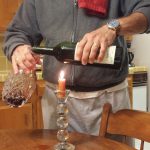 We were lucky to enjoy a 1978 Heitz Cellar Napa Cabernet from the single vineyard of Bella Oaks. It had been stored in the same cool dark place, since it was bought at the winery – a condition that is ideal for successful aging. Be careful, no matter how well it’s stored, corks in old wines can be fragile. When I pulled it, this one crumbled halfway out.
We were lucky to enjoy a 1978 Heitz Cellar Napa Cabernet from the single vineyard of Bella Oaks. It had been stored in the same cool dark place, since it was bought at the winery – a condition that is ideal for successful aging. Be careful, no matter how well it’s stored, corks in old wines can be fragile. When I pulled it, this one crumbled halfway out.
Aged wines usually “throw” sediment – goop that settles out of the wine and accumulates along the bottom of the bottle. To prevent the sediment from mixing back in, making the wine cloudy, the wine needs to be decanted. Keeping the bottle horizontal, pour the wine slowly into a decanter. A light under the bottle (traditionally a candle but a flashlight works just as well), shows when the sediment starts to flow and the pouring should stop. Sadly, some wine is wasted.
The 1978 Bella Oakes had bright, red currant color and fresh-fruit aromas. Elegant, with finesse, still-crisp acidity, and lingering fruit, it seemed much younger and fresher than its age would suggest. With a faint touch of oxidation, it seemed just past its peak, but remarkable at age 39.
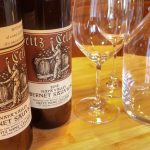 The Heitz family is still making age-worthy wines. We recently compared both their Napa ($52) and Trailside Vineyard ($85) Cabernets from 2012. Both were wines you’d be thrilled to drink at any time, but the elegant single vineyard Trailside was everybody’s favorite. With fresh berry aromas, subtle spice, and oak flavors, it will clearly develop over time. I’d give it 10 years or so.
The Heitz family is still making age-worthy wines. We recently compared both their Napa ($52) and Trailside Vineyard ($85) Cabernets from 2012. Both were wines you’d be thrilled to drink at any time, but the elegant single vineyard Trailside was everybody’s favorite. With fresh berry aromas, subtle spice, and oak flavors, it will clearly develop over time. I’d give it 10 years or so.
The Wine Enthusiast Magazine just published its Top 100 Cellar Selections list for 2017. It’s a good place to start if you’re looking for wines to age. These wines are at the top of the wine making heap and priced accordingly. But if you have a special occasion and want to lay down a special wine to commemorate, go ahead. It’s worth the wait.
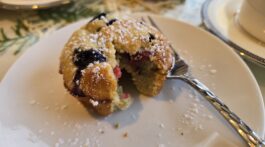








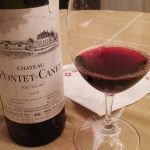
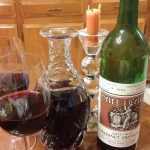
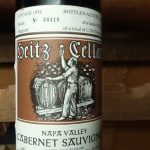
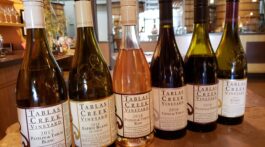
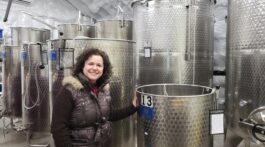

No Comment